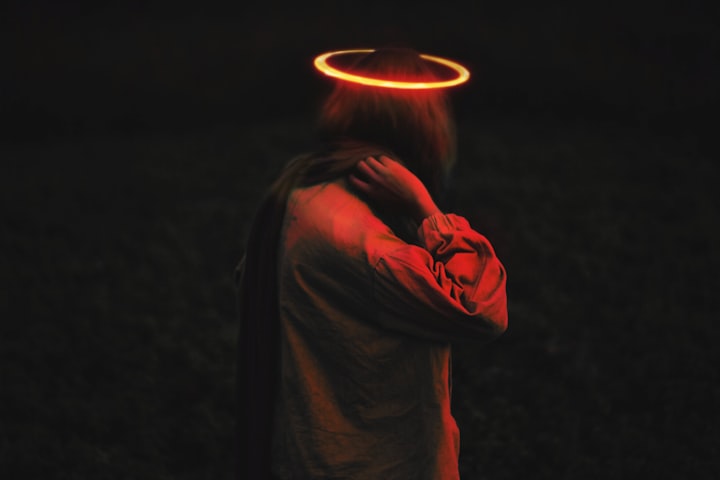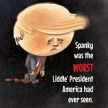Art and Suffering
Does an honest confrontation with suffering create better art?

There exists a school of thought that maintains that without great suffering and depth of experience, no truly great art can arise. Why does it seem like so many artists, both in the past and in more recent times, appear to have been the victims of so many misfortunes, turbulent psychological states, unhappy childhoods and family backgrounds, and miserable or failed marriages and relationships? Is this unhappiness perhaps part and parcel of the human condition, and are artists just the more obvious or poetic martyrs?
Referring to the Ancient Greek understanding of "literary genius" (although I'm sure lyricists and songwriters could also be included), the book Theory of Literature presents the perspective that, "The poet is the 'possessed': he is unlike other men, at once less and more; and the unconscious out of which he speaks is felt to be at once sub- and super-rational." (Wellek and Warren, 81). Perhaps this could apply to many poets, but perhaps also to at least some songwriters, prose writers, painters, filmmakers, etc. They all, to varying degrees, rely on their unconscious to help produce their artistic works, but those who create the best works of art are able to transcend or somehow unite Dionysian instincts (or the Freudian Id) and Apollonian reason (or the Ego and/or Superego).
The concept of a daimon (δαίμων) originated from antiquity and was common among the ancient Greeks. A daimon is like an emissary between Heaven and Earth, or like a spirit guide that can selectively bestow upon someone individual gifts and burdens. In his YouTube video "These Unseen Beings Can Give Fame, Talent, Wealth & Power!", the Hindu mystic Gurudev Sri Sri Ravi Shankar says the following:
"the Gandharva...spirits...are behind every successful artist. A great musician is not an individual person who is singing. Through him there is a spirit called Gandharva, and Gandharvas bring you great fame. And they bring joy and happiness to the population, but they make the person [the artist] very miserable." (Shankar, Ravi).
The idea that unseen beings, such as Gandharvas, influence the lives of artists adds another layer to this complex relationship between art and suffering. According to Gurudev, these spirits bestow fame and talent upon artists but also bring about personal misery. This notion suggests that artists may be both blessed and burdened by forces beyond their control, further fueling the narrative of the tormented genius.
Moreover, the concept of a daimon as an intermediary between heaven and earth implies that artists are conduits for transcendent experiences, channeling their inner struggles, triumphs, dreams, and fantasies into their creative works. This perspective underscores the profound responsibility and vulnerability inherent in the act of creation.
In exploring the intricate relationship between literary genius and psychological complexity, one cannot overlook poignant examples like Proust and Kafka as discussed in René Wellek and Austin Warren's seminal work Theory of Literature: "Pope was a hunchback and a dwarf; Byron had a club foot; Proust was an asthmatic neurotic of partly Jewish descent; Keats was shorter than other men; Thomas Wolfe, much taller." (Wellek and Warren, 81).
Proust's asthmatic neurosis, Kafka's existential anguish, and Freud's psychoanalytic musings collectively serve as testaments to the multifaceted interplay between personal affliction and creative expression. Proust, with his exquisite evocation of memory and time in In Search of Lost Time, navigates the labyrinth of his own neurotic predispositions, transforming personal anguish into universal introspection.
Kafka, on the other hand, delves into the depths of existential dread, crafting surreal landscapes that mirror the turbulent recesses of his psyche. His works, such as The Trial and The Metamorphosis, resonate with readers precisely because they confront the complexities of human existence with unflinching honesty.
"If the writer is neurotic in his themes (as Kafka certainly is), how is it that his work is intelligible to his readers? The writer must be doing far more than putting down a case history. He must either be dealing with an archetypal pattern (as does Dostoyevsky, in The Brothers Karamazov), or with a 'neurotic personality' pattern widespread in our time." (Wellek and Warren, 82).
At the heart of this discourse lies Freud's penetrating analysis of the artist as a "daydreamer who is socially validated." Freud's assertion underscores the paradoxical nature of creative endeavor, wherein the artist's flights of imagination serve as both refuge and revelation. By delving into the realm of phantasy, the artist confronts the vicissitudes of reality, transmuting inner turmoil into tangible form.
Yet, Freud's perspective also prompts reflection on the artist's perpetual negotiation between inner conflict and external validation. In this dynamic interplay between neurosis and creativity, the artist emerges not merely as a purveyor of aesthetic beauty but as a harbinger of profound psychological insight, navigating the liminal spaces between dream and reality with unwavering resolve.
"The artist [says Freud] is originally a man who turns from reality because he cannot come to terms with the demand for the renunciation of instinctual satisfaction as it is first made, and who then in phantasy-life allows full play to his erotic and ambitious wishes . . . Instead of altering his character, [the poet or artist] perpetuates and publishes his fantasies." [Freud, 'The Relation of the Poet to Day-Dreaming', Collected Papers (1925), pp. 173-83, as paraphrased/cited in Wellek and Warren].
Ultimately, the question of whether an honest confrontation with suffering leads to better art remains open to interpretation. While some argue that adversity fuels creativity and depth of expression, others caution against romanticizing suffering as a necessary ingredient for artistic greatness. Perhaps the truth lies somewhere in between, acknowledging that while suffering may inform and inspire artistic endeavors, it is not the sole determinant of artistic merit.
In conclusion, the intertwined nature of art and suffering reflects the complexity of the human experience. Artists, as both creators and interpreters of their reality, navigate the depths of their emotions and experiences to produce works that resonate with audiences across time and space. Whether suffering is a catalyst for artistic brilliance or merely a companion on the artistic journey, its presence cannot be denied in the tapestry of artistic expression.
WORKS CITED
Shankar, Ravi. "These Unseen Beings Can Give Fame, Talent, Wealth & Power! | Gurudev." YouTube, uploaded by Gurudev Sri Sri Ravi Shankar, 20 Dec. 2021, https://www.youtube.com/watch?v=LrxCPXbH8b0
Wellek, R., & Warren, A. Theory of Literature. New York: Harcourt, Brace & World, Inc., 1956. 81, 82. Print.
About the Creator
ANTICHRIST SUPERSTAR
https://www.theguardian.com/commentisfree/2024/mar/02/aaron-bushnell-death-washington-gaza
https://rumble.com/v4qfv2f-the-anti-woke-blowback-is-coming.html






Comments
There are no comments for this story
Be the first to respond and start the conversation.